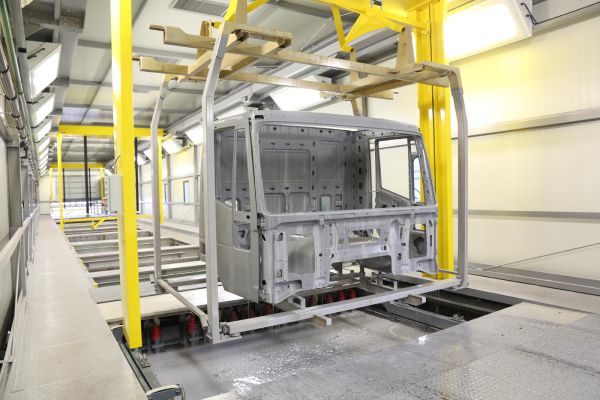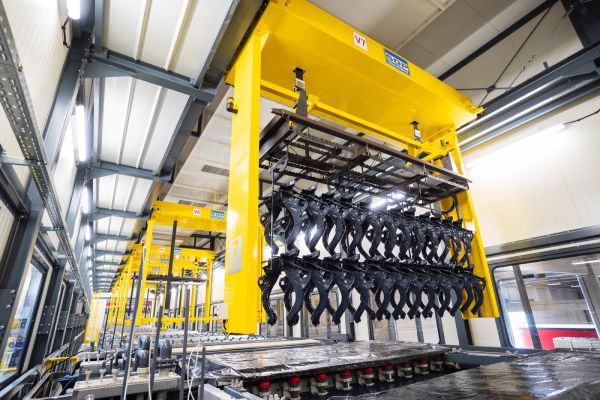Electrophoresis (KTL)
Electrophoretic coatings are used for surface protection of all types of metal materials. In practice, a distinction is made between cataphoretic and anaphoretic varnish application. The application of cataphoretic varnish is carried out with the help of direct current, where the workpiece is a cathode (negative charge), and positive particles of cataphoretic varnish are applied to it with the help of anode cells. In the case of anaphoretic varnish application, the poles are reversed, so the workpiece is the anode (positive charge), and the cells are cathodic. The process in both cases works on the principle of opposite attraction. The thickness of the application is determined based on the tension, which allows us to evenly consume paint throughout the workpiece. The electrophoretic varnish passes on the workpiece until it is completely evenly covered with the desired film thickness. It provides the best surface protection among the varnishing materials as well as a beautiful appearance of the product, the cost of the varnishing itself is very low, and the process is environmentally friendly, as even electrophoretic varnishes do not contain highly volatile substances. For all these reasons, electrophoretic application of varnish is a very popular procedure in the automotive industry. |
| Electrophoresis (KTL) |




